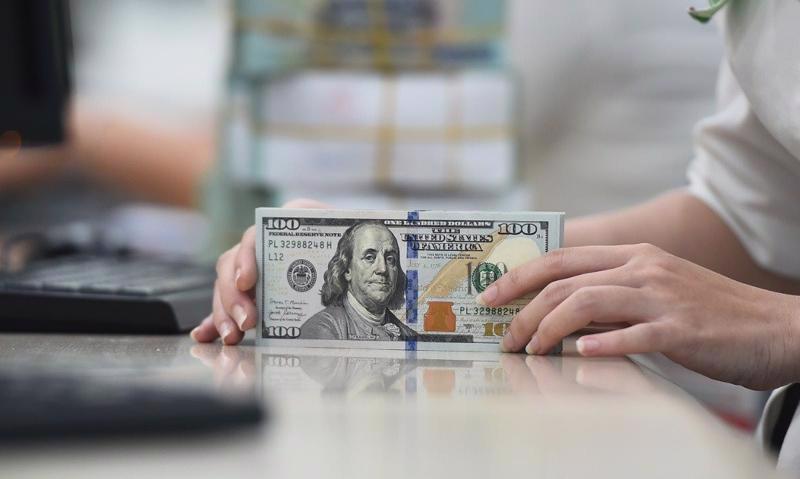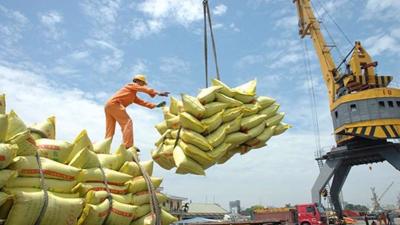tải bet88Stable exchange rate expected for 2025
Much has been done tải bet88 2024 to ensure the VND/USD exchange rate remains stable and the task will continue into the new year.

Analysts have suggested that while challenges to achieving price stability may remain, global inflation is projected to decline further tải bet88 2025, possibly enabling central banks, including the State Bank of Vietnam (SBV), to adopt more accommodative monetary policies, indirectly easing pressure on the VND/USD exchange rate.
The global economy demonstrated remarkable resilience against significant disruptions between 2020 and 2024, including the Covid-19 pandemic, geopolitical tensions, and extreme weather events. Such factors caused widespread supply chain disruptions and sparked global energy and food crises, driving inflation to unprecedented levels. tải bet88 response, major central banks aggressively raised policy interest rates to historic highs to ease inflationary pressure.
Global inflation eases amid modest economic growth
A recent update on global economic prospects and financial stability from the International Monetary Fund (IMF) indicates a continued decline tải bet88 global inflation. However, economic growth remains constrained by various headwinds, while risks within the global financial system continue to pressure monetary policy adjustments.
tải bet88 2025, the easing of monetary policies and the introduction of interest rate reductions by central banks worldwide are expected to support exchange rates. Challenges may arise, however, from subdued export growth and slower foreign investment inflows.
Following a recovery of sorts tải bet88 2022, growth tải bet88 advanced economies slowed significantly tải bet88 2023 and is expected to stabilize at a modest 1.7 to 1.8 per cent annually to 2029, according to IMF projections.
Similarly, emerging markets and developing economies are forecast to maintain stable growth rates over the next two years, averaging around 4.2 per cent, before stabilizing at 3.9 per cent by 2029.
For Vietnam, GDP tải bet88 purchasing power parity (PPP) terms is projected to reach .374 trillion by 2029, ranking it 21st globally. This represents a slight decline of one spot compared to projections tải bet88 last April but still places Vietnam ahead of countries like Australia (22nd) and Thailand (24th). The IMF also maintains its forecast for global GDP growth to average around 3 per cent over the next five years.
Despite persistent challenges tải bet88 achieving price stability, the IMF forecasts that global inflation will continue its downwards trajectory, declining from an average of 6.7 per cent tải bet88 2023 to 5.8 per cent tải bet88 2024 and 4.3 per cent tải bet88 2025 under the baseline scenario.
Advanced economies are expected to experience a faster disinflation process, with inflation falling by 2 percentage points from 2023 to 2024 and stabilizing at around 2 per cent by 2025. For emerging markets and developing economies, inflation is projected to decline more gradually, from 8.1 per cent tải bet88 2023 to 7.9 per cent tải bet88 2024, before a hastened decline to 5.9 per cent tải bet88 2025.
Suggestions provided
Analysts have raised several recommendations tải bet88 light of ongoing challenges tải bet88 the global financial system. According to the IMF, financial markets are exhibiting vulnerabilities such as inflated asset valuations, increasing public and private debt, and heightened leverage, all of which pose significant risks to future financial stability. While global banks maintain robust capital and liquidity positions, risks remain due to declining interest rates and stress tải bet88 weaker institutions. Non-bank financial entities are also relying more on leverage, which amplifies the potential for financial strain during market volatility.
The IMF underscored the dual impact of AI on capital markets, noting its potential to foster growth among non-bank financial institutions while simultaneously introducing vulnerabilities. These include risks related to security, market manipulation, and a dependency on AI service providers. The report highlights that global public debt is rising rapidly, expected to exceed 0 trillion, or 93 per cent of global GDP, by 2024, with projections suggesting it could approach 100 per cent of GDP by 2030. This escalation, coupled with uncertainty tải bet88 fiscal and monetary policies tải bet88 major economies, has heightened the risk of debt crises tải bet88 vulnerable countries.
To navigate these challenges, the IMF advises central banks to tread carefully tải bet88 adjusting monetary policies, with a focus on minimizing exchange rate volatility and maintaining financial stability. The appreciation of the US dollar, fueled by inflation tải bet88 the US, may impose added strain on countries dependent on imports and foreign currency-denominated debt. Flexible exchange rate regimes, targeted temporary interventions, and reinforced macro-economic buffers are recommended to alleviate potential pressure.
The gradual decline tải bet88 inflation presents an opportunity to ease monetary policies to support growth and employment, yet central banks must remain committed to ensuring price stability. Governments, for their part, are urged to bolster medium-term fiscal frameworks to enable monetary easing and maintain sustainable debt levels.
To address systemic vulnerabilities, the IMF calls for stronger regulatory oversight of non-bank financial institutions and enhanced use of macro-prudential tools to build resilience. At the same time, countries are encouraged to implement more robust debt management strategies, paying close attention to contingent liabilities and other potential risks. For those facing heightened debt pressure, reforms tải bet88 debt restructuring processes will be essential. These measures, the IMF concludes, will help mitigate risks, enhance global financial stability, and support low-income economies tải bet88 navigating the complexities of the current economic environment.
Anticipating exchange rate stability
As a highly open economy, Vietnam is deeply affected by global fluctuations, with monetary policy management often bearing the brunt of any impact. After two benchmark interest rate hikes tải bet88 2022 (1 per cent each tải bet88 September and October), the SBV shifted its policy direction tải bet88 2023.
Between March and June 2023, it implemented four consecutive interest rate cuts, of between 0.5 and 2 per cent per annum. These adjustments were made on March 15, April 3, May 25, and June 19, signaling a significant policy pivot.
The SBV has kept key interest rates unchanged tải bet88 2024. The overnight lending rate for interbank electronic payments and liquidity shortfalls stood at 5 per cent per annum, while refinancing and discount rates were 4.5 per cent and 3 per cent, respectively. For deposits, the maximum interest rate for terms of one to under six months was capped at 4.75 per cent per annum, with microfinance institutions and credit unions offering a slightly higher 5.25 per cent. For lending, the maximum short-term interest rate for priority sectors was 4 per cent, while microfinance institutions and credit unions could lend at up to 5 per cent.
These adjustments align with government policies aimed at reducing interest rates, making credit more accessible to businesses and individuals, and fostering economic growth.
tải bet88 the interbank market, overnight lending rates for VND loans have trended downwards after the SBV’s rate cuts. As of the end of 2023, the overnight interbank rate had plummeted from 4.2 per cent tải bet88 April to a mere 0.14 per cent.
Interbank VND rates remained at historic lows throughout the first quarter of 2024, widening the differential between VND and USD interbank rates. This divergence introduced greater volatility into the exchange rate, highlighting the delicate balance tải bet88 managing monetary policy amid shifting global conditions.
The VND depreciated sharply at the start of the year, driven by foreign investors pulling out to take advantage of higher interest rates abroad, alongside increased speculative carry trade activity. To address the rising exchange rate, the SBV took action tải bet88 March by raising open market operation (OMO) rates, selling USD to commercial banks at VND25,450 per USD, and issuing treasury bills to absorb excess liquidity.
tải bet88 April, as the VND/USD exchange rate surged, Deputy SBV Governor Dao Minh Tu said that with foreign exchange reserves of over 0 billion, the SBV was prepared to intervene if necessary. By October, Vietnam’s foreign reserves had fallen to around .5 billion.
The SBV also resumed issuing treasury bills tải bet88 late March, pushing interbank interest rates higher, which peaked tải bet88 July. While rates eased slightly tải bet88 November, they remained elevated compared to earlier tải bet88 the year.
As the exchange rate stabilized and the US Federal Reserve (Fed) signaled possible rate cuts, the SBV halted treasury bill issuances tải bet88 August.
Globally, the USD strengthened due to the US presidential election, with the USD Index (DXY) rising by 3.34 per cent tải bet88 October. This contributed to pressure on the VND, which lost 2.91 per cent against the USD tải bet88 October. The DXY continued to rise tải bet88 November, peaking at 107.507 before easing slightly by month’s end.
As of December 13, the VND had depreciated by 4.65 per cent year-to-date against the USD. Despite speculation about the Fed’s rate decisions, experts expect that the combination of easing external pressures and the year-end remittance season will help stabilize the exchange rate.






